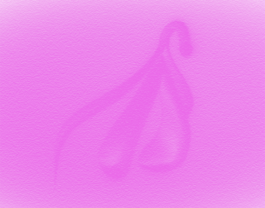


Female Pleasure, The Clitoris and a Path to Healing
In this piece, I dive into the hidden history of women's pleasure, using the erasure of the clitoris from science, religion, and medicine as a powerful example.
From there, we explore what it means to reclaim pleasure as a path to empowerment, healing, and freedom, and how gentle practices can help awaken that connection within you.
I want to talk with you about female pleasure.
Historically, it has been repressed, ignored, and misunderstood. For centuries, Western medicine, religion and culture suppressed female pleasure—by ignoring it, minimising it, or declaring it irrelevant.
Imagine if an entire organ - designed solely for pleasure - was left out of medical textbooks until 1998. Now imagine that organ belonged to half the human population.
Sounds unthinkable, right? But that’s exactly what happened with the clitoris.
Or that during the Middle Ages, it was even labeled as a sign of witchcraft?
And in the 19th century, doctors were performing clitoridectomies on women without consent to “treat” things like hysteria and rebellious behaviour.
Reclaiming this is not just personal - it is collective work.
It means unlearning shame, re-educating ourselves and others, and changing the cultural narrative around female pleasure.
We need better sex education, more research, and open conversations without taboo.
The more we understand it, the more we reclaim what was stolen from us.
The benefits are profound:
Pleasure reduces stress and inflammation, improves sleep and mood, and balances hormones.
And there are practices beyond orgasm that can elevate this connection to your body.
Pleasure is not just about sex. It is about empowerment, health, nervous system regulation, and self-connection.
Like Tantric breathwork, womb-centered self-pleasure, and activating the sacral chakra to tap into creativity and intuition.
Early Western medicine treated the clitoris with indifference or ignorance.
Yet, women knew better.
Still, mainstream medicine centered men—and anything not tied to reproduction was erased.
The Middle Ages moved from ignorance to fear.
The Church reinforced this with myths like Eve being created from Adam’s rib - symbolising male dominance (though some scholars suggest “rib” may have meant “side,” hinting at equality).
By the 1800s, female desire was pathologized.
In 1905, Freud declared clitoral orgasms “immature,” claiming women should orgasm through penetration.
If they didn’t, they were labeled “frigid” or psychologically deficient.
This idea became medical dogma—despite having no scientific basis.
It shaped sex education, therapy, and research for decades.
Modern neuroscience now confirms what women have always known:
The clitoris is the primary source of female pleasure, with over 8,000 nerve endings—far more than the penis.
Most women need 20–30 minutes of direct stimulation to orgasm—not just penetration.
Incredibly, the full anatomy of the clitoris wasn’t mapped until Dr. Helen O’Connell’s groundbreaking work in 1998.
1. Disconnection from the Body & Sexual Self
Many women grow up without understanding their own anatomy—especially the clitoris. Shame around self-touch or desire leads to low libido, difficulty with pleasure, or feeling disconnected from their sensuality.
2. Internalized Shame & Guilt
Cultural and religious conditioning still frames female pleasure as indulgent or taboo. This creates guilt, anxiety, and difficulty expressing sexual needs—even in safe, loving relationships.
3. Medical & Educational Gaps
Pleasure is often ignored in gynecological care. Sex ed focuses on reproduction, not clitoral stimulation. Issues like anorgasmia or vaginismus remain under-researched and misunderstood.
4. Unequal Sexual Dynamics
Women are taught to prioritize others’ pleasure. Many feel broken if they don’t orgasm from penetration - a myth rooted in outdated medical theories.
5. Suppressed Life Force & Creativity
Pleasure is linked to creative and intuitive energy. When it’s suppressed, women may experience burnout, emotional disconnection, or lack of inspiration.
6. Ongoing Cultural Control
The repression of pleasure has always been about control. Today, it still shows up in societal norms, limited reproductive rights, and institutional neglect.
We know that the historic repression of female pleasure continues to affect women today - both consciously and subconsciously.
Educating ourselves, unlearning shame, reclaiming our bodies, and sharing knowledge make this not just healing - but a revolutionary act.
Reclaiming pleasure is reclaiming power.
Your body is not broken. Your pleasure is not shameful.
It’s a birthright. A source of health. A tool for healing.
Reclaiming pleasure means rewriting the narrative, understanding its true history and reconnecting with the wisdom of your own body. When you do, you unlock profound benefits for your health, empowerment, and overall well-being.
- Reduces stress & inflammation (Uvnäs-Moberg, 2003)
- Activates the parasympathetic nervous system (deep rest state)
- Improves digestion, sleep, and mood (Komisaruk et al., 2006)
- Stimulates neuroplasticity & creativity (Mouras et al., 2003)
- Increases blood flow to the prefrontal cortex (Komisaruk et al., 2006)
- Reduces menstrual pain & balances hormones (Ditzen et al., 2009)
Pleasure is sacred—and there are many gentle ways to reconnect with it. Through breath, movement, and body-based practices, you can awaken your sensual energy and realign with your inner power.
In Tantric traditions, pleasure is a gateway to healing, intuition, and deeper self-connection. The sacral chakra—your center of pleasure, emotion, and creativity—plays a key role in this.
Simple practices like pelvic floor breathing, womb meditation, and fluid body movement can help you return to your body and activate your inner flow. These exercises support hormonal balance, emotional release, and nervous system regulation.
When we suppress pleasure, we suppress life force, creativity, and inner wisdom. Reclaiming it brings you home to your body and your power.
Try these gentle practices to begin reconnecting with your pleasure:
Creative Drawing – Use flowing lines, spirals, and warm colors like orange to express emotion and stimulate sacral chakra energy. Let the movement come from your hips and hands, not your head.
Pelvic Flow Movement – Stand with your feet grounded and make slow, circular motions with your hips and lower body. This opens the sacral chakra, activates pelvic energy, and restores rhythm and flow.
Womb Pulsing – Sit or lie down with hands on your womb space. As you breathe, gently visualize or feel a subtle pulsing or rhythmic energy in your womb—like an inner heartbeat. This quiet, meditative practice deepens connection to your creative center and helps awaken dormant energy.
Pleasure regulates stress, balances your hormones, awakens your intuition - and connects you back to yourself.
- Reclaiming the clitoris means reclaiming knowledge, autonomy, and joy.
- Your pleasure is yours - own it, explore it, celebrate it.
With Love
Teresa
Read Other Articles:

Female Pleasure, The Clitoris and a Path to Healing
In this piece, I dive into the hidden history of women's pleasure, using the erasure of the clitoris from science, religion, and medicine as a powerful example.
From there, we explore what it means to reclaim pleasure as a path to empowerment, healing, and freedom, and how gentle practices can help awaken that connection within you.
I want to talk with you about female pleasure.
Historically, it has been repressed, ignored, and misunderstood. For centuries, Western medicine, religion and culture suppressed female pleasure—by ignoring it, minimising it, or declaring it irrelevant.
Imagine if an entire organ - designed solely for pleasure - was left out of medical textbooks until 1998. Now imagine that organ belonged to half the human population.
Sounds unthinkable, right? But that’s exactly what happened with the clitoris.
Or that during the Middle Ages, it was even labeled as a sign of witchcraft?
And in the 19th century, doctors were performing clitoridectomies on women without consent to “treat” things like hysteria and rebellious behaviour.
Reclaiming this is not just personal - it is collective work.
It means unlearning shame, re-educating ourselves and others, and changing the cultural narrative around female pleasure.
We need better sex education, more research, and open conversations without taboo.
The more we understand it, the more we reclaim what was stolen from us.
The benefits are profound:
Pleasure reduces stress and inflammation, improves sleep and mood, and balances hormones.
And there are practices beyond orgasm that can elevate this connection to your body.
Pleasure is not just about sex. It is about empowerment, health, nervous system regulation, and self-connection.
Like Tantric breathwork, womb-centered self-pleasure, and activating the sacral chakra to tap into creativity and intuition.
Early Western medicine treated the clitoris with indifference or ignorance.
Yet, women knew better.
Still, mainstream medicine centered men—and anything not tied to reproduction was erased.
The Middle Ages moved from ignorance to fear.
The Church reinforced this with myths like Eve being created from Adam’s rib - symbolising male dominance (though some scholars suggest “rib” may have meant “side,” hinting at equality).
By the 1800s, female desire was pathologized.
In 1905, Freud declared clitoral orgasms “immature,” claiming women should orgasm through penetration.
If they didn’t, they were labeled “frigid” or psychologically deficient.
This idea became medical dogma—despite having no scientific basis.
It shaped sex education, therapy, and research for decades.
Modern neuroscience now confirms what women have always known:
The clitoris is the primary source of female pleasure, with over 8,000 nerve endings—far more than the penis.
Most women need 20–30 minutes of direct stimulation to orgasm—not just penetration.
Incredibly, the full anatomy of the clitoris wasn’t mapped until Dr. Helen O’Connell’s groundbreaking work in 1998.
1. Disconnection from the Body & Sexual Self
Many women grow up without understanding their own anatomy—especially the clitoris. Shame around self-touch or desire leads to low libido, difficulty with pleasure, or feeling disconnected from their sensuality.
2. Internalized Shame & Guilt
Cultural and religious conditioning still frames female pleasure as indulgent or taboo. This creates guilt, anxiety, and difficulty expressing sexual needs—even in safe, loving relationships.
3. Medical & Educational Gaps
Pleasure is often ignored in gynecological care. Sex ed focuses on reproduction, not clitoral stimulation. Issues like anorgasmia or vaginismus remain under-researched and misunderstood.
4. Unequal Sexual Dynamics
Women are taught to prioritize others’ pleasure. Many feel broken if they don’t orgasm from penetration - a myth rooted in outdated medical theories.
5. Suppressed Life Force & Creativity
Pleasure is linked to creative and intuitive energy. When it’s suppressed, women may experience burnout, emotional disconnection, or lack of inspiration.
6. Ongoing Cultural Control
The repression of pleasure has always been about control. Today, it still shows up in societal norms, limited reproductive rights, and institutional neglect.
We know that the historic repression of female pleasure continues to affect women today - both consciously and subconsciously.
Educating ourselves, unlearning shame, reclaiming our bodies, and sharing knowledge make this not just healing - but a revolutionary act.
Reclaiming pleasure is reclaiming power.
Your body is not broken. Your pleasure is not shameful.
It’s a birthright. A source of health. A tool for healing.
Reclaiming pleasure means rewriting the narrative, understanding its true history and reconnecting with the wisdom of your own body. When you do, you unlock profound benefits for your health, empowerment, and overall well-being.
- Reduces stress & inflammation (Uvnäs-Moberg, 2003)
- Activates the parasympathetic nervous system (deep rest state)
- Improves digestion, sleep, and mood (Komisaruk et al., 2006)
- Stimulates neuroplasticity & creativity (Mouras et al., 2003)
- Increases blood flow to the prefrontal cortex (Komisaruk et al., 2006)
- Reduces menstrual pain & balances hormones (Ditzen et al., 2009)
Pleasure is sacred—and there are many gentle ways to reconnect with it. Through breath, movement, and body-based practices, you can awaken your sensual energy and realign with your inner power.
In Tantric traditions, pleasure is a gateway to healing, intuition, and deeper self-connection. The sacral chakra—your center of pleasure, emotion, and creativity—plays a key role in this.
Simple practices like pelvic floor breathing, womb meditation, and fluid body movement can help you return to your body and activate your inner flow. These exercises support hormonal balance, emotional release, and nervous system regulation.
When we suppress pleasure, we suppress life force, creativity, and inner wisdom. Reclaiming it brings you home to your body and your power.
Try these gentle practices to begin reconnecting with your pleasure:
Creative Drawing – Use flowing lines, spirals, and warm colors like orange to express emotion and stimulate sacral chakra energy. Let the movement come from your hips and hands, not your head.
Pelvic Flow Movement – Stand with your feet grounded and make slow, circular motions with your hips and lower body. This opens the sacral chakra, activates pelvic energy, and restores rhythm and flow.
Womb Pulsing – Sit or lie down with hands on your womb space. As you breathe, gently visualize or feel a subtle pulsing or rhythmic energy in your womb—like an inner heartbeat. This quiet, meditative practice deepens connection to your creative center and helps awaken dormant energy.
Pleasure regulates stress, balances your hormones, awakens your intuition - and connects you back to yourself.
- Reclaiming the clitoris means reclaiming knowledge, autonomy, and joy.
- Your pleasure is yours - own it, explore it, celebrate it.
With Love
Teresa
Read Other Articles: